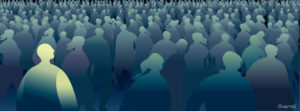My focus on the relationship between national identity and images started with my collaboration with the Alianza party’s 1997 campaign. There, once the celebrations of the campaign’s success were over, several important points occurred to me.
To start with, I had discovered what a symbol can provoke at a certain time, in a society that is willing to find new forms of representation and new significations of their identities and hopes. Consequently, as Foucault would put it, I found some sort of ability “to affect” the world inhabited by us from my work as a brand designer. I also found how I contributed to the socially “fortuitous finding of something that was not being looked for but which changes everything that came before and is to come”, as cleverly stated by the Dutch designer Gert Dumbar.
Second, I clearly discovered my own activity to be a complex and deep mystery yet to be fully understood.
Then, some questions came to me, such as: Are images likely to have an ideology? Can democratic identities possibly be designed? Furthermore, how can one be part of a whole like a nation and still respect the internal differences that live together in any sort of organization?
Within this context, broad and deep questions addressing my worries and interests came up. I wondered if there were collective identities at all, and if so, if it were good for us to have them. The same question applied to the existence of institutions, especially national ones, and particularly if it is good to support the existence of a national identity.
In the face of these doubts, I first tried to continue with my studies. Nevertheless, design therories were not enough. I remembered at that point Johan Itten’s opinion about the matter. As a Bauhaus professor, he pointed out that theory is as useful to design as it is to driving a car to reach the horizon; the latter will always be out of reach, but the designer will get closer (Itten, 1997). However, I did not wanted to simply reach the horizon; I wanted to understand the horizon and understand why I should reach it and see if a last resort solution lay in taking on something else. In this sense, it seemed as if design could continue doing good things without my questions, but that I could not.
In this way, after accepting the margins of design, there came a second moment which was trying to locate the suitable branch of social sciences and to find the tools to face the actions demanded by my work. Therefore, would philosophy, psychology, sociology, anthropology, or history be the source of my answers? The response is that it would not just be one of these areas but all of them
All this made me understand that I needed to learn to speak the language of each of these disciplines to be able to listen to, understand and relate to the discourses that were necessary for me and my topic. I found that I had to surf over the different waves of the communication and image theories. This is why I did my PhD.
©Sebastian Guerrini, 2009








